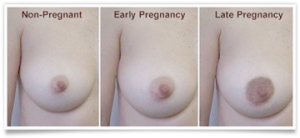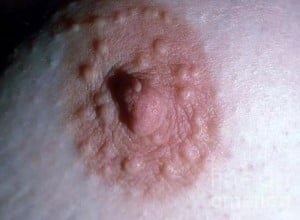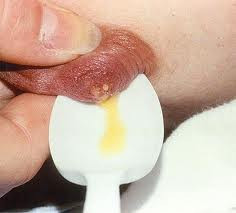 As a woman progresses through the various life stages of puberty, childbirth, and menopause, her body and her breasts go through many changes.
As a woman progresses through the various life stages of puberty, childbirth, and menopause, her body and her breasts go through many changes.
Regardless of how she plans to feed her baby, her body will begin the process of preparing for lactation as soon as she becomes pregnant. Her breasts will continue to change all throughout the pregnancy in preparation for her infant’s first feeding.
Here are some of the breast changes you can expect during your pregnancy journey:
- Breasts may become tender and sensitive to touch, due to the increased production of hormones (estrogen and progesterone). Hormone production gears up immediately once pregnancy occurs, and breast and nipple tenderness are often the first symptoms noticed. The tenderness usually subsides by the end of the first trimester, although the nipples may remain more sensitive the whole time moms are pregnant or nursing.
- Breasts will increase in size. Growth of breast tissue and development of milk ducts starts early in the first trimester, and continues through the pregnancy. It varies with the individual, but most moms will find that their breasts do grow larger, sometimes as much as two cup sizes. Other moms don’t see much size increase at all. What’s important is not how much the breasts increase in size, but that you see some increase as the pregnancy progresses. No breast development at all may indicate a medical problem, so ask your doctor about it if you’re concerned. If the breasts grow large enough to cause discomfort, wearing a supportive and well-fitting bra can help. Be prepared to purchase several bras during the pregnancy as breast growth occurs.

- The veins in the breasts become more visible. Blood flow increases by as much as 50% during pregnancy. As the blood supply increases, veins become larger and more noticeable.
- Your breasts may feel lumpy. As breast growth occurs and extra tissue is formed, you may notice lumps. Milk ducts extend up into the armpit and may become swollen as the breast tissue develops. Lumps are almost always benign, but you should call your doctor if you find new ones or see a change in an existing lump.
- The areola (area around the nipple) becomes larger and darker. This increase in pigmentation makes the nipple area more visible to the newborn baby – sort of like a bull’s eye for him to use to visually locate his ‘target’.
- Little bumps on the areola (sebaceous glands called ‘Montgomery’s tubercles’) become more prominent. The average nipple has about ten Montgomery glands which become more noticeable during pregnancy. They secrete an antibacterial oil that lubricates and protects the nipple, which is why nursing moms are advised not to wash their nipples with soap.

- Breasts will start producing colostrum sometime during the second trimester (around 16 weeks). Colostrum is a concentrated fluid which contains so many antibodies that it’s sometimes referred to as ‘nature’s first vaccine’. Breasts don’t produce colostrum in large amounts, but every single drop provides important benefits to babies. Colostrum is the first food available to newborns immediately after birth, providing them with the perfect nutrition until mom’s milk ‘comes in’ 2-5 days later. Colostrum also has a laxative effect, helping the newborn infant excrete the mecononium stool and reducing the incidence of jaundice.
- Your breasts may start leaking. Some moms will leak lots of colostrum during pregnancy, while others are able to express only a drop or two. Colostrum doesn’t look like milk – it’s thick and sticky, and clear or yellowish. It may not leak out at all, but drops can usually be seen if the nipple is gently expressed. The amount of colostrum produced during the pregnancy has no relationship to the amount of milk the mother will produce for her baby.

- Nipples may become flat or inverted as your breast tissue swells. It’s not unusual for first time expectant mothers to have nipples that don’t fully protrude. Nearly one third will experience some degree of inversion during their pregnancy, but as the skin stretches and becomes more elastic only one out of ten will still have flat or inverted nipples by the time their baby is born. The article Flat and Inverted Nipples has more information, including a simple ‘pinch test’ to help you determine if the shape of your nipples might present breastfeeding challenges.
All the breast changes that have taken place over the past nine months have prepared your body to make the perfect food for your newborn baby when he arrives.
Aren’t mama’s bodies amazing?
Anne Smith, IBCLC
Breastfeeding Basics
 Breastfeeding Basics
Breastfeeding Basics



